On May 23, SID 2023 (Display Week 2023) kicked off in California, USA, with more than 200 exhibitors attending the three-day event. This year, most attention was drawn to microdisplays engineered with Mini/Micro LED and Micro OLED for AR/VR wearables. Several leading companies, including Saphflux, Seoul Semiconductor, JBD, Porotech, TCL CSOT and BOE, showcased their latest microdisplay offerings.
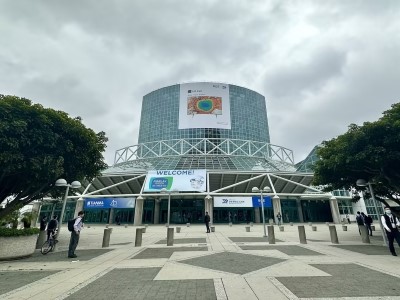
SAPHLUX
Saphlux exhibited three products at SID 2023.
The LED maker unveiled a prototype of a 0.39-inch RGB microdisplay designed for AR/VR glasses in collaboration with INNOVISION. For the first time, Saphlux applied the Nanoparticle Quantum Dot (NPQD) technology to a consumer microdisplay with significantly improved red light efficiency and performance. The company plans to launch a 0.12-inch microdisplay sample and a full-color solution later in Q3 this year.
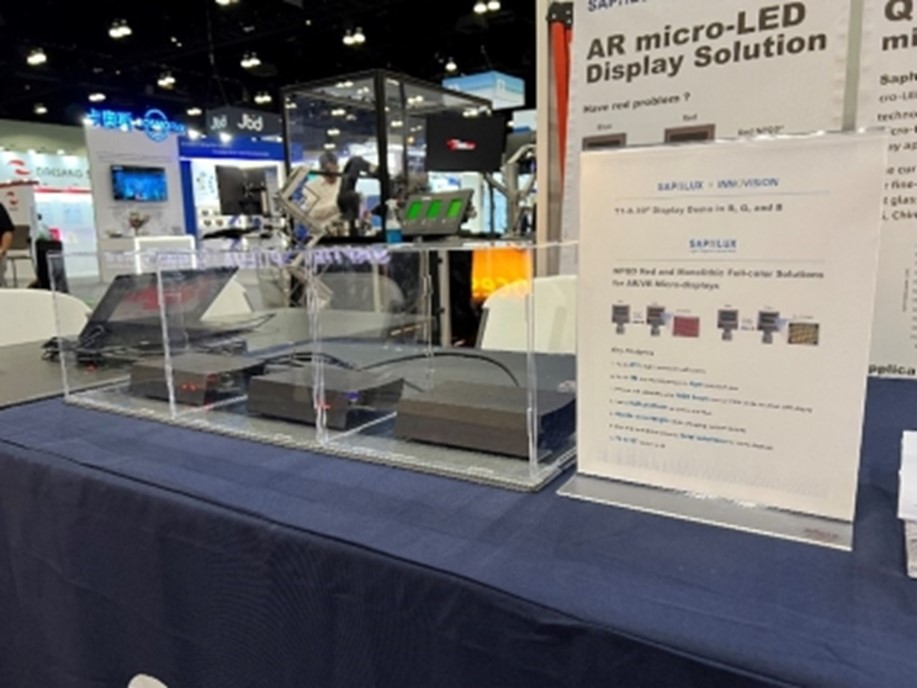
0.39" RGB microdisplay prototype
During the exhibitor’s forum, Saphlux CEO Dr. Chen Chen delivered a speech titled "A High-Efficiency Full-Color Monolithic Micro LED Display for AR/MR/VR Applications Using NPQD Technology," delving into the company's cutting-edge technologies in quantum dots and microdisplays while offering insights into the industry's future prospects.
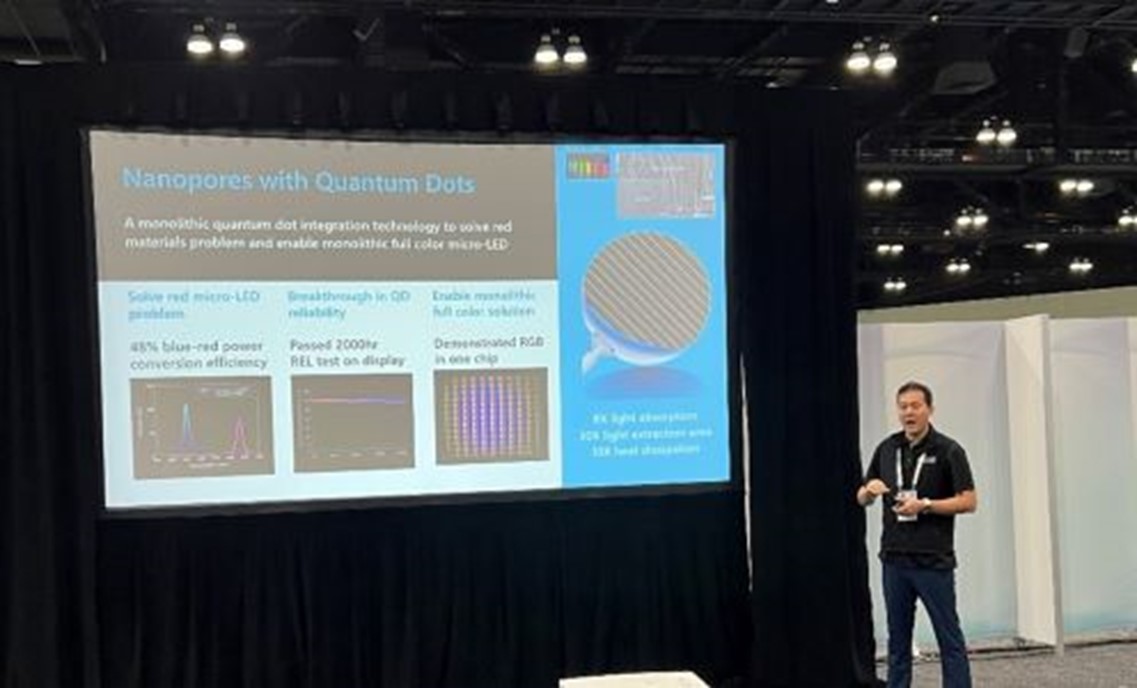
Dr. Chen Chen, CEO of Saphlux
Concerning large-sized displays, Saphlux presented the R1 Micro LED product line tailored for fine-pitch displays, featuring quantum dots combined with the Micro LED technology. Additionally, it showcased the world's first 162-inch 4K QLED direct-emitting video wall developed jointly with Leyard, boasting wide viewing angles, wide color gamut and high consistency.

R1 Micro LED series
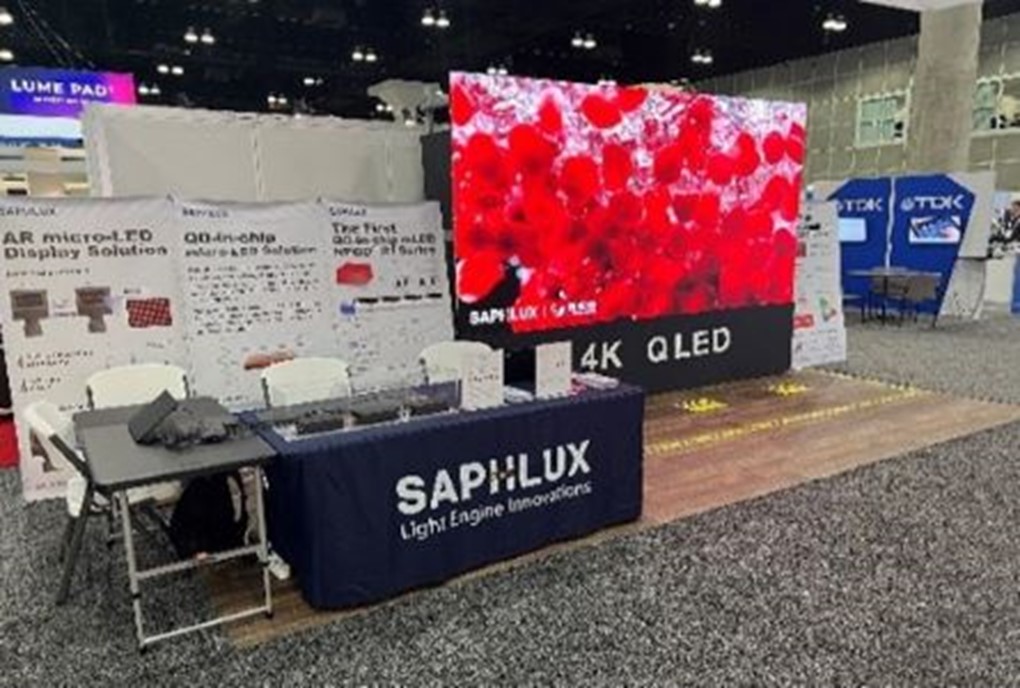
162" 4K QLED direct-emitting video wall
Seoul Semiconductor
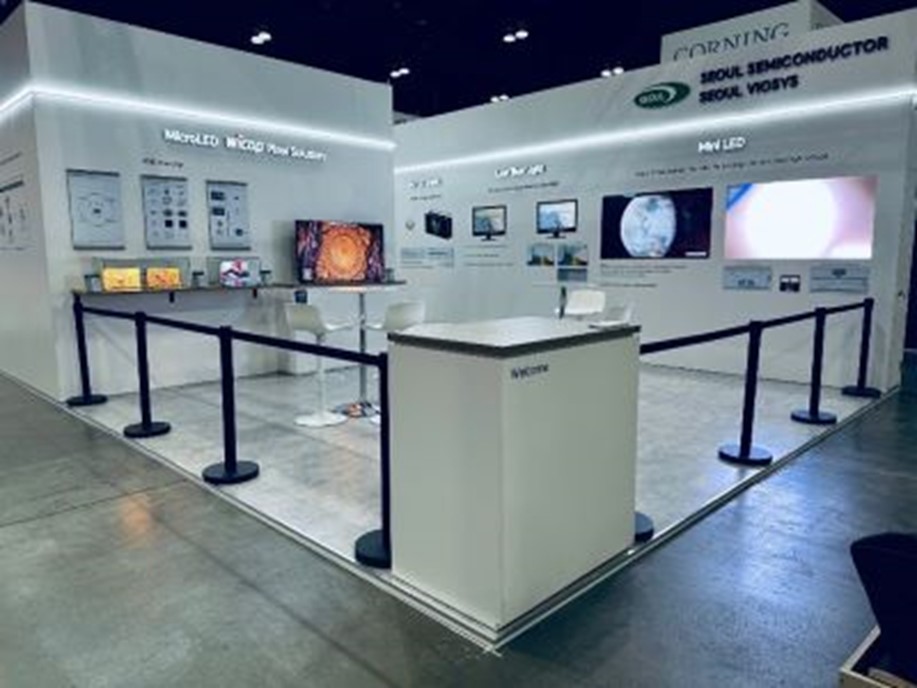
Seoul Semiconductor introduced two products, the first being a Micro LED display engineered with its WICOP Pixel technology capable of delivering a brightness of 10,000 nits. The WICOP Pixel is arguably the world's first full-color monolithic technology that does not require wire bonding, packaging and the use of lenses. It comes with a structure of vertically stacked RGB Micro LEDs, resulting in a smaller chip size and improved display uniformity. Applications for the WICOP Pixel are wide-ranging, including virtual display devices, automotive displays and other Micro LED displays.
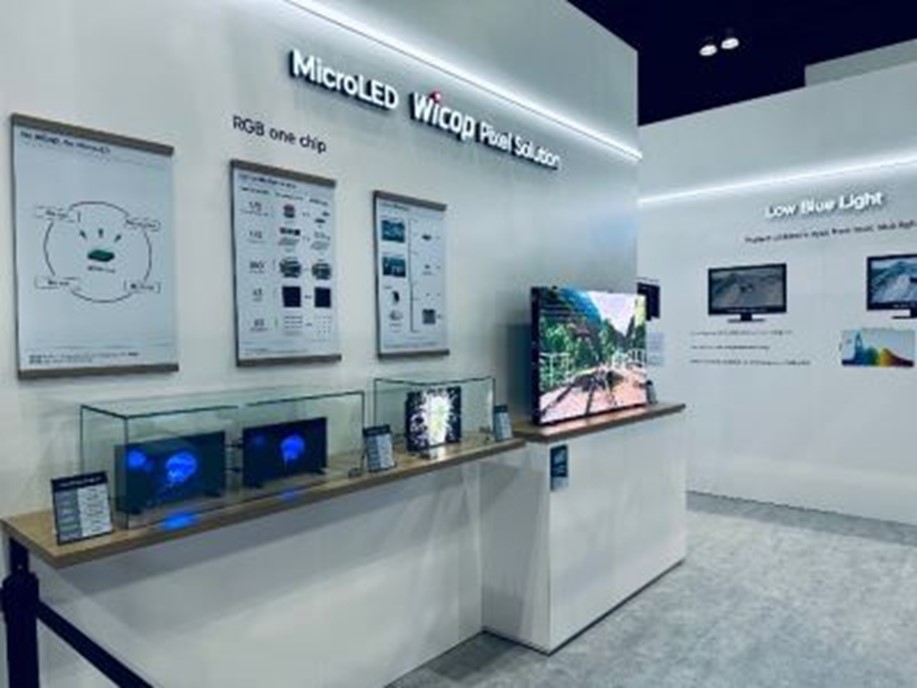
WICOP Pixel
The second exhibit was a low blue-light (LBL) LED display designed to protect users' eyes. Seoul Semiconductor utilized its proprietary fluorescent substance technology to minimize harmful blue wavelengths (415 to 455nm). Conventional LBL technologies block blue light using a single filter, which can lead to color distortion and a yellowish screen. By contrast, Seoul Semiconductor's LBL technology reduces harmful blue light without the need for screening processes, thereby ensuring clear image reproduction.
TCL CSOT
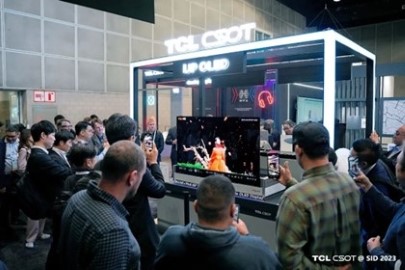
Credit: TCL CSOT
TCL CSOT exhibited the world's first mass-produced 1512-PPI (pixel per inch) Mini LED VR display equipped with 492 local dimming zones, a contrast ratio of 100,000:1 and a refresh rate of 120Hz.
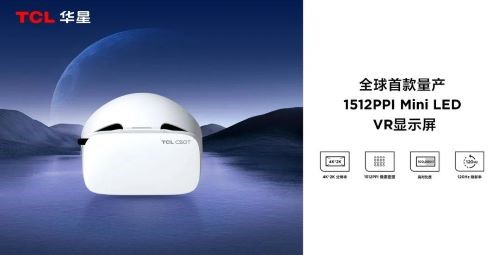
1512 PPI Mini LED VR display
Furthermore, TCL CSOT showcased a 47.5-inch integrated pillar-to-pillar curved automotive display powered by Mini LED backlights boasting an 8K resolution, one-million-to-one contrast ratio, and 4200R curvature; the product is a combination of autonomous driving, entertainment and work-related functions.
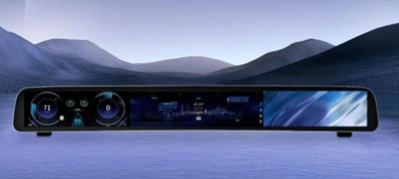
47.5" curved vehicle mount display
The exhibitor also demonstrated a range of other products, including an 8K flexible inkjet-printed foldable OLED TV, narrow-bezel flexible OLED display, LTPO VR display module and 57-inch advanced R1000 curved gaming screen.
BOE
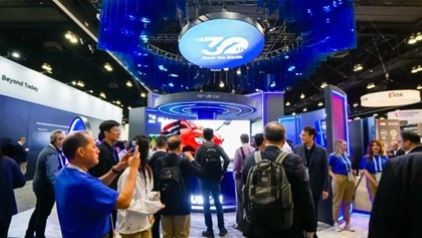
Credit: BOE
BOE showcased the ADS Pro, f-OLED, and α-MLED technologies, unveiling new products for smart automotive, naked-eye 3D, and metaverse applications.
Concerning metaverse applications, BOE demonstrated a 1.3-inch 4K Micro OLED VR display. The first 4K field sequential VR product boasts an ultra-high resolution of up to 2117 PPI with approximately 50% less energy used. The exhibitor’s first hardware-interlaced 8K naked-eye 3D display comes with an UHD display with a 4K single-eye resolution.
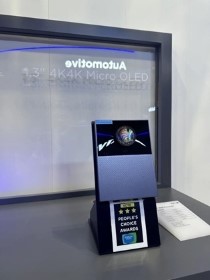
1.3" 4K Micro OLED VR display
As for smart vehicle mount devices, BOE presented three products: 1) A 42.2-inch pillar-to-pillar display paired with a 6.94-inch CMS (electronic exterior rearview mirror) featuring an ultra-high resolution of 10K and million-grade contrast ratio, 2) a 15-inch slidable central display, and 3) a 12.3-inch hidden Mini LED dual-display featuring wood surface texture and 50% higher brightness.
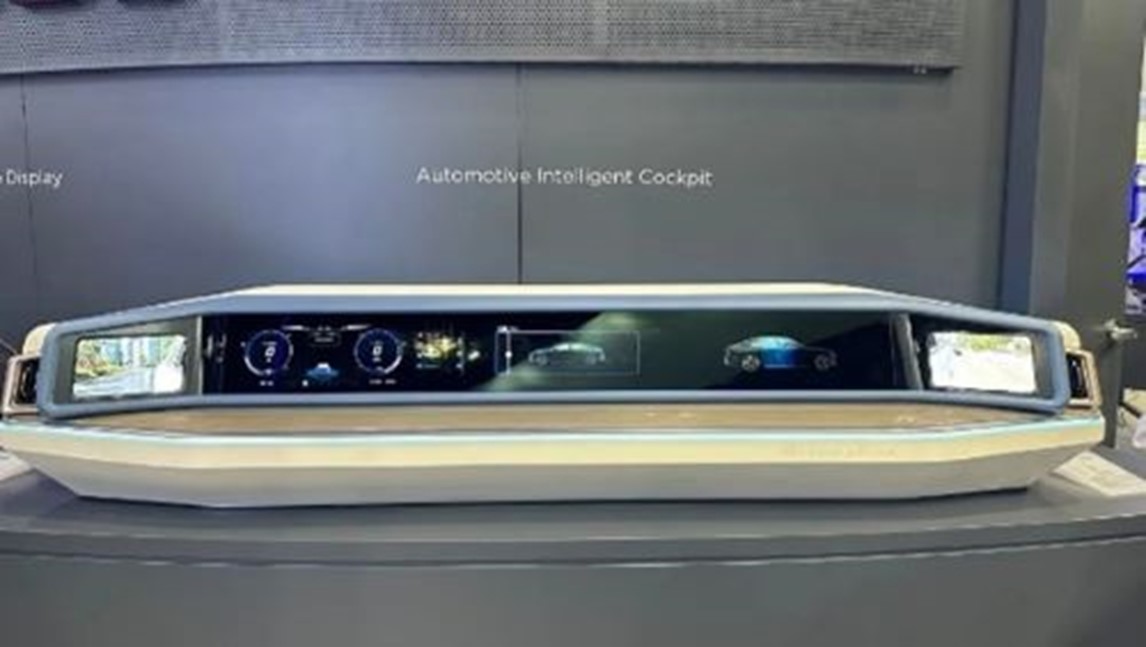
42.2" pillar-to-pillar display
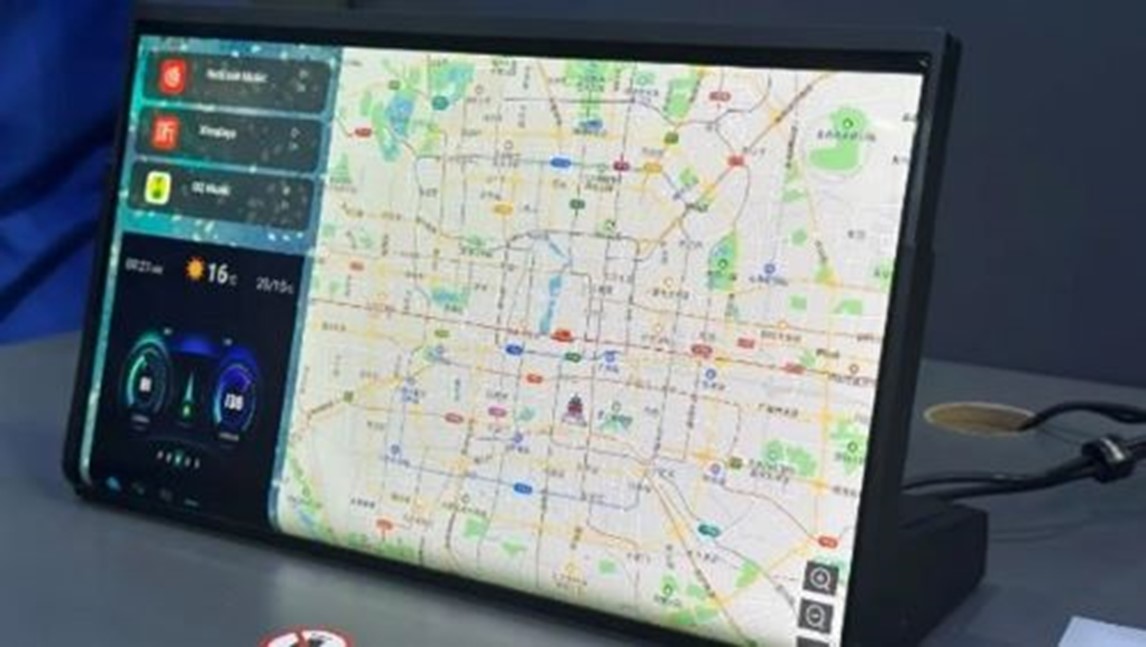
15" slidable central display
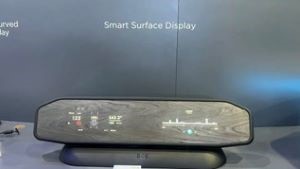
12.3" hidden dual-display with wood surface texture
In addition, BOE exhibited several other products, including a 31.5-inch AM COG MLED-backlit display with 4,000 dimming zones and a brightness of 2,500 nits, a 163-inch P0.9 LTPS COG MLED display, and a 17-inch curved notebook display.
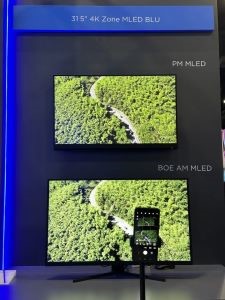
31.5" AM COG MLED display
Innolux
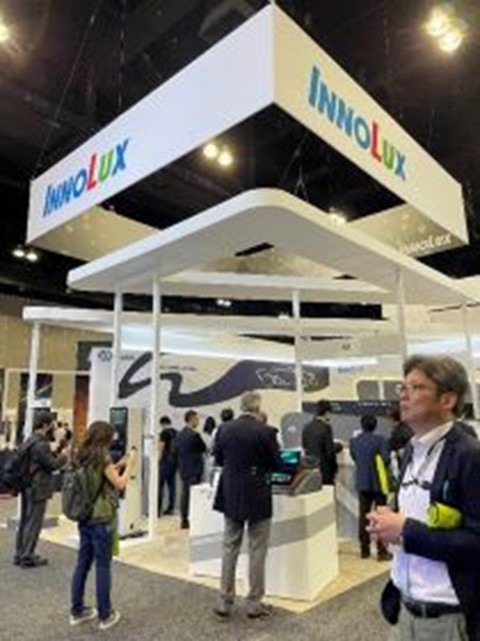
Innolux showcased various AR/VR solutions, including the a 2117-PPI energy-efficient 4K VR LCD display engineered with Mini LED backlights; the product features a 100-degree wide FoV, high color saturation, low power consumption and lightweight design.
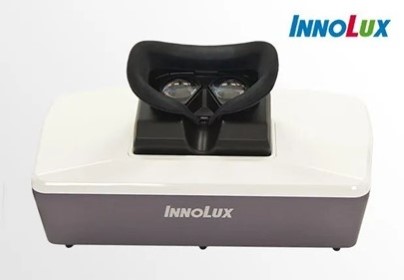
2771 PPI 4K VR LCD with lower power consumption (Credit: Innolux)
Additionally, Innolux presented a 28-inch Micro LED automotive display, 1.57-inch dynamic LCD dimmer, a 13.3-inch N3D smart photo frame, 31.5-inch naked-eye N3D display and 31.5-inch glossy realistic display. These products are engineered with special anti-glare, anti-reflection, world’s first-ever naked-eye N3D technologies, and the company’s proprietary Kirameki optical simulation algorithm.
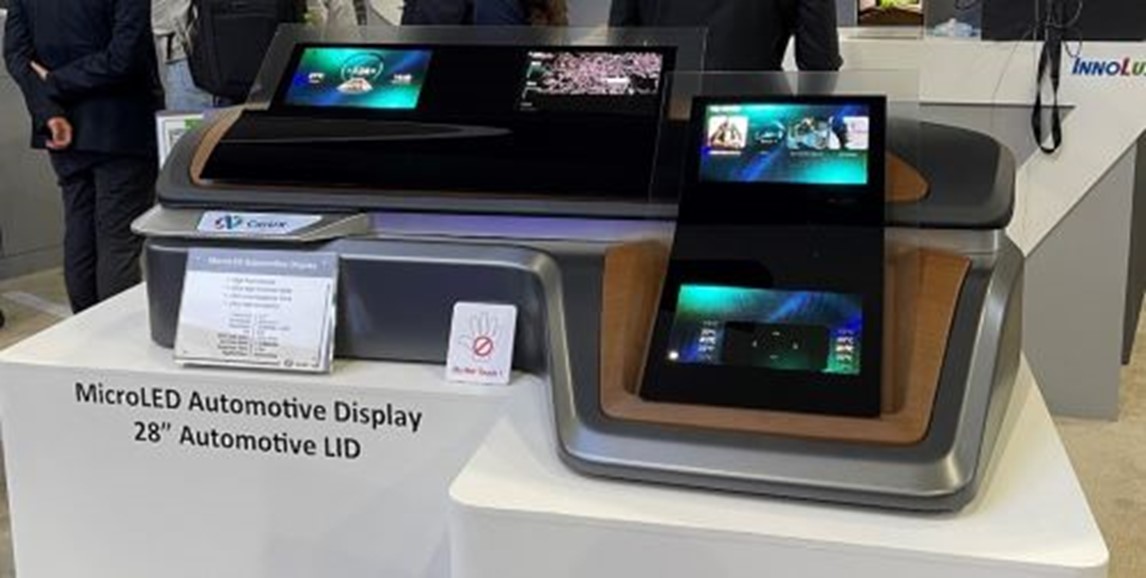
28-inch Micro LED automotive display
PlayNitride
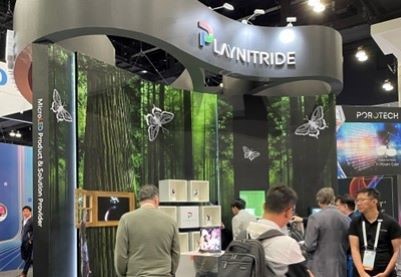
PlayNitride exhibited a 0.49-inch Micro LED microdisplay module with an ultra-high resolution of 4536 PPI FHD and brightness exceeding 100,000 nits, which is suitable for AR glasses.
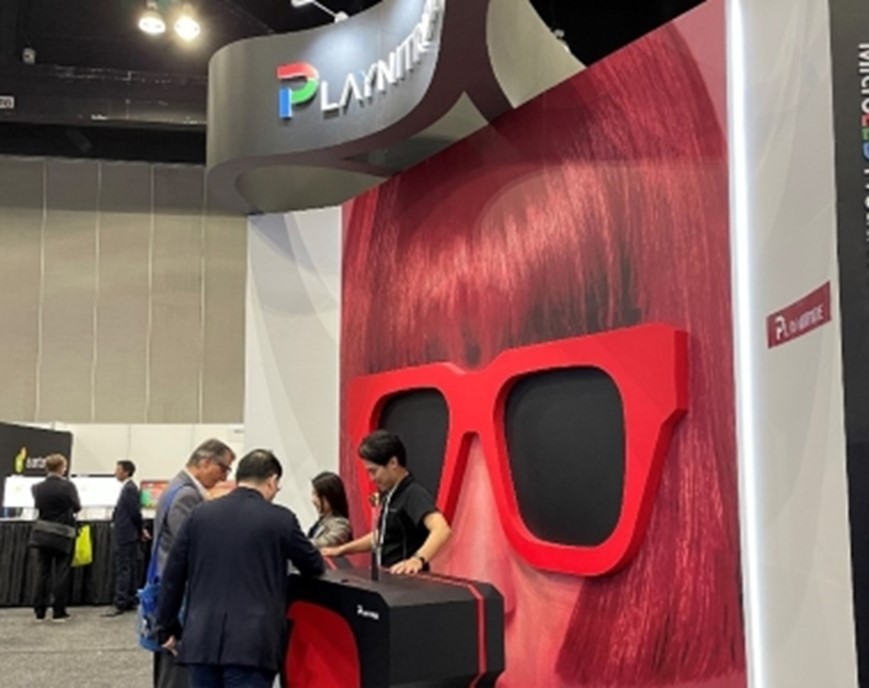
The company also presented a 1.58-inch Micro LED wearable display engineered with RGB and QD color conversion, a 9.38-inch transparent Micro LED touchscreen, and a seamless 166-inch PixeLED Matrix Micro LED display with wide color gamut of 116% NTSC and a brightness of 2000 nits.
AUO
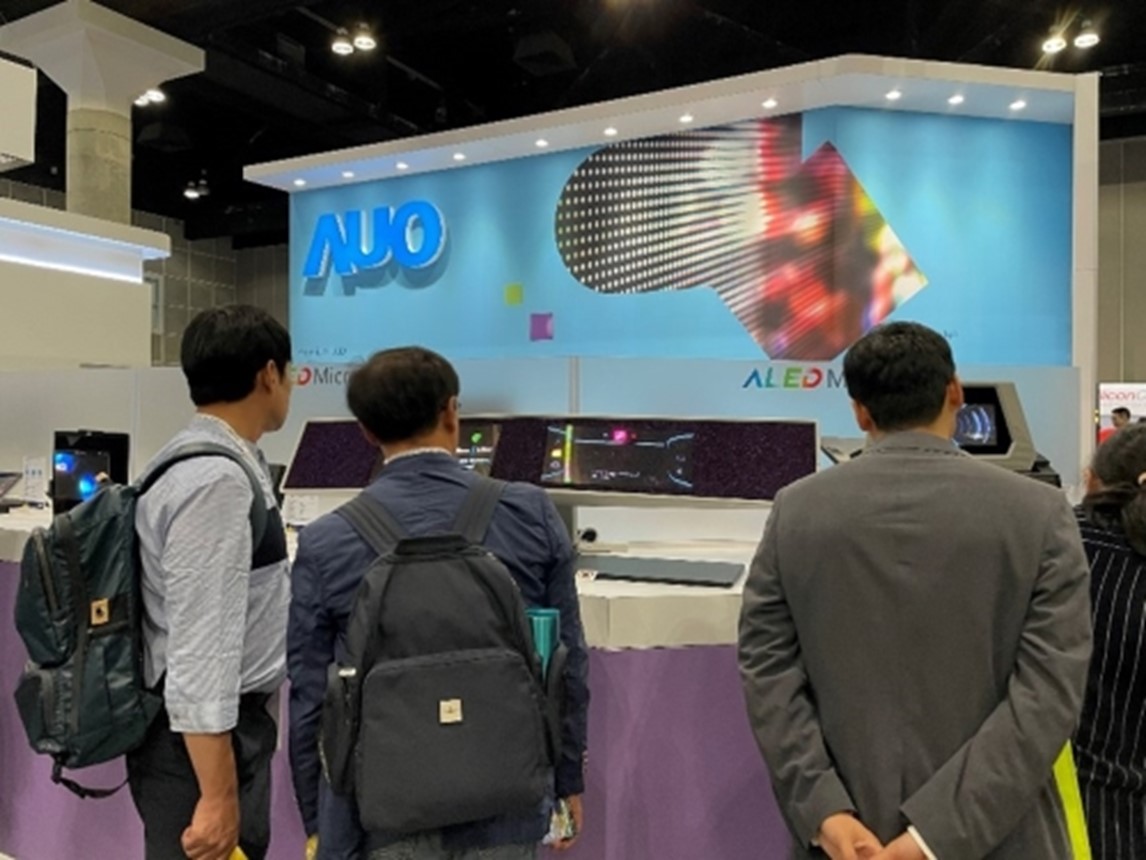
AUO showcased several Micro LED products.
First, the exhibitor presented a 14.6-inch foldable display with pixel density of 202 PPI. Thanks to Micro LED's high-brightness, high-contrast nature, the product boasts excellent display quality and brightness even at wide viewing angles.
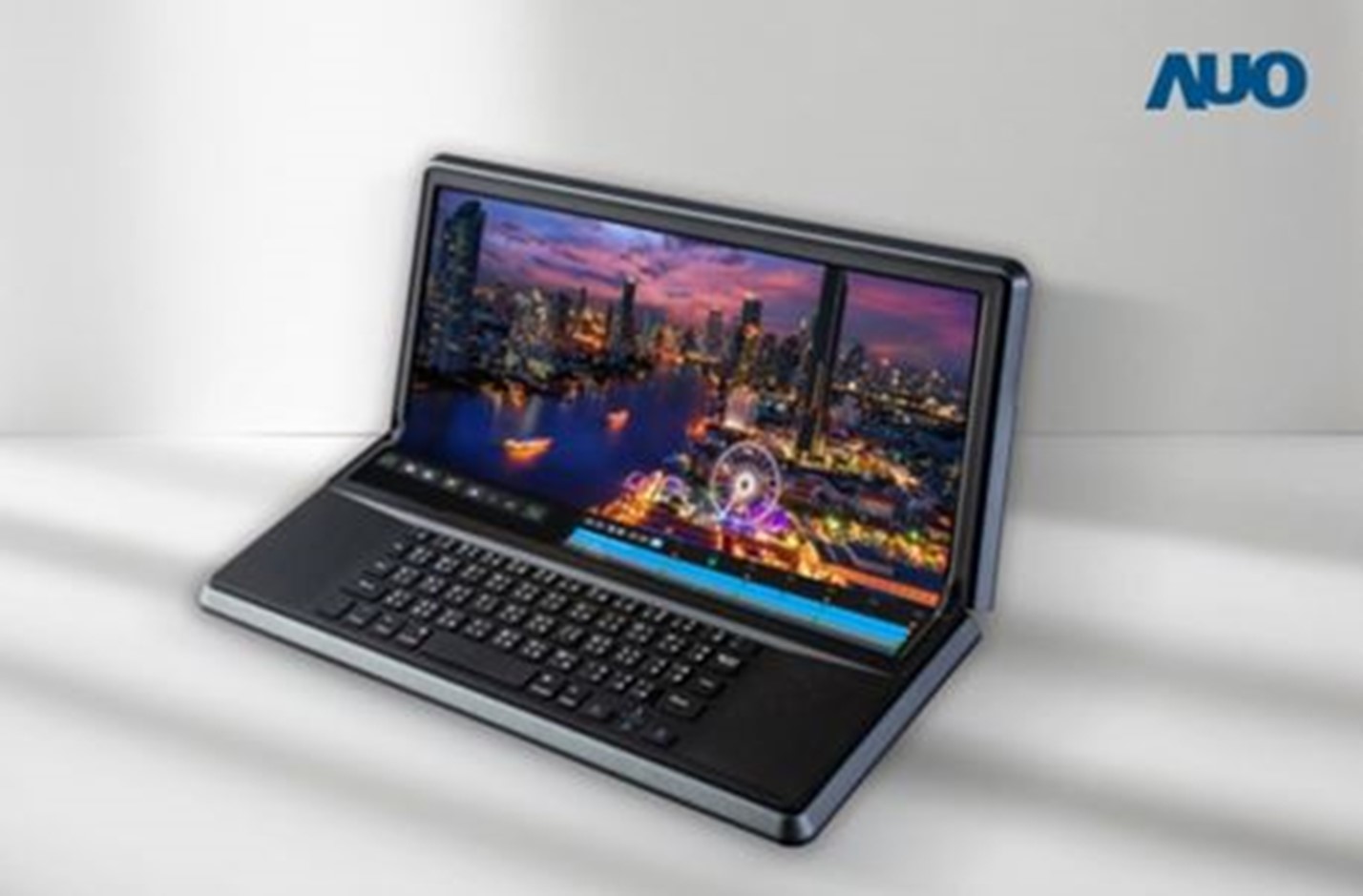
Credit: AUO
For the dashboard, AUO demonstrated a transparent Micro LED display integrated with an LCD panel. Users can watch 3D images without the need to wear special glasses.
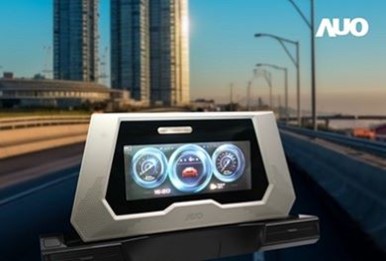
A 13.5-inch transparent Micro LED panel was showcased on site, claiming to have the world's highest resolution of 163 PPI.
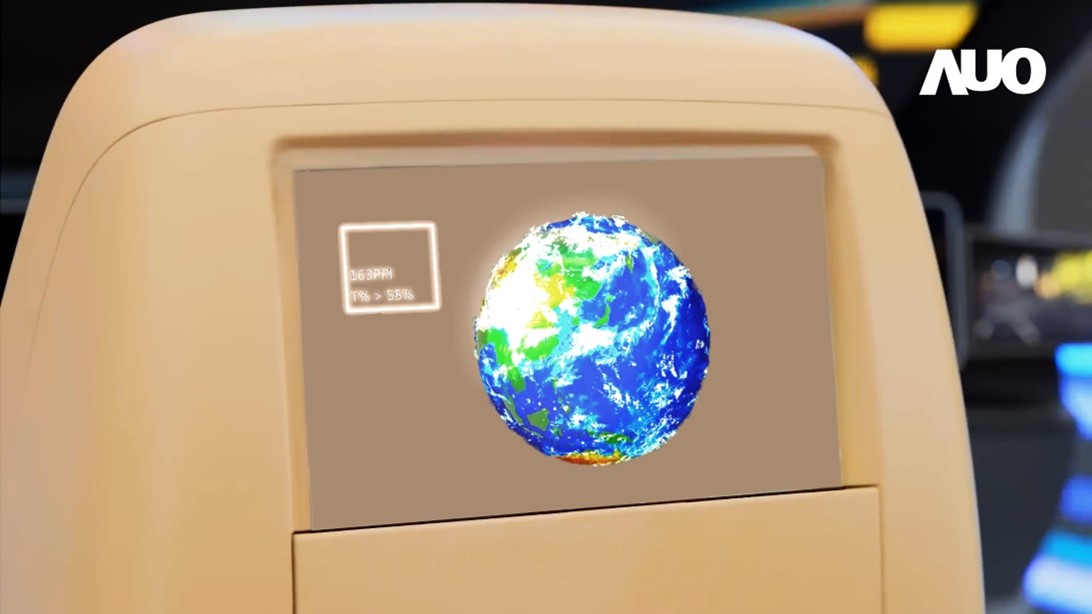
Moreover, the panel maker revealed a Micro LED display combined with the A.R.T.® technology, offering excellent anti-glare and anti-reflection properties as well as high scattering characteristics.
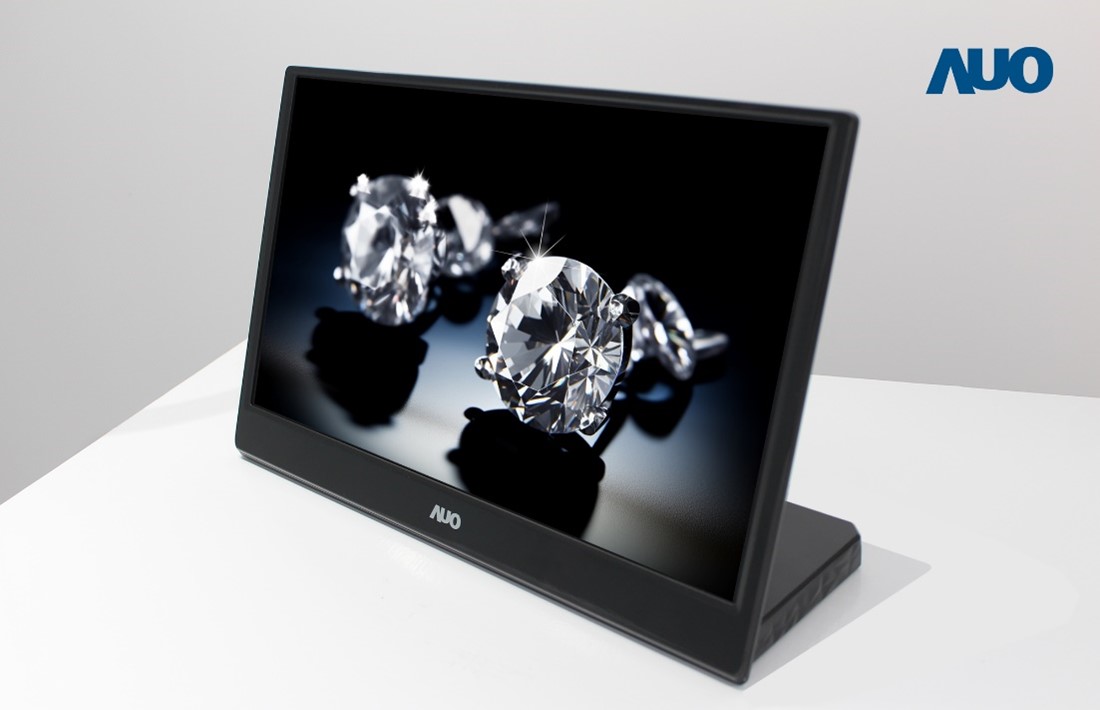
JBD

JBD released the "Hummingbird" optical engine for AR/VR glasses, equipped with the Micro LED AM μLED 0.13 series microdisplay. It features 8-bit color depth with a palette of 16.77 million true colors. The engine only measures 0.4 cm3, weighing merely 1.0 g. The product offers a standard FoV of 30°, which can be customized within the range from 25° to 45°. The Hummingbird can output a luminous flux between 3 and 5 lumens in D65 white balance state and achieve an impressive brightness of 1,800 nits when combined with a decent optical waveguide.
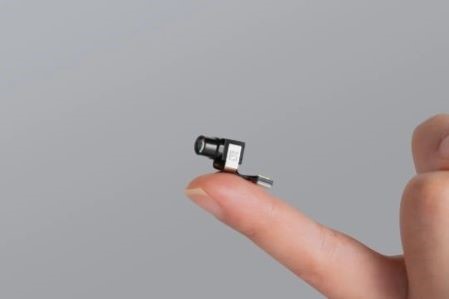
The Hummingbird optical engine (credit: JBD)
JBD also revealed a reference design of dual-eye polychrome AR glasses using its Hummingbird optical engine and a 3D printer with Micro LED being the light source.
Raysolve
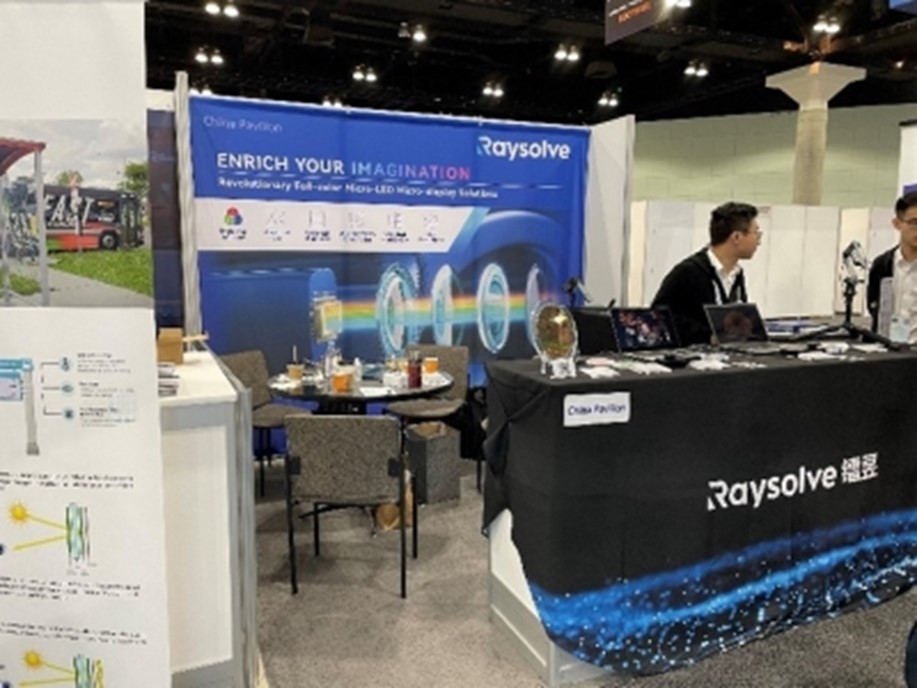
Raysolve displayed the world's first 0.11-inch and 0.22-inch monolithic full-color microdisplay series powered by Micro LED.
The 0.11-inch microdisplay is said to have broken the record for the smallest Micro LED chip, weighing only 0.23 g and offering a full-color resolution of 320x240, while its 0.22-inch counterpart weighs 0.29 g with a full-color resolution of 640x480.

Credit: Raysolve
These chips come with a super-small pixel pitch of 3.5 mm, Micro LED pixel density of up to 7,200 PPI, full-color brightness of 100,000 nits, and compatibility with operating temperatures from -20°C to 85°C.
Porotech
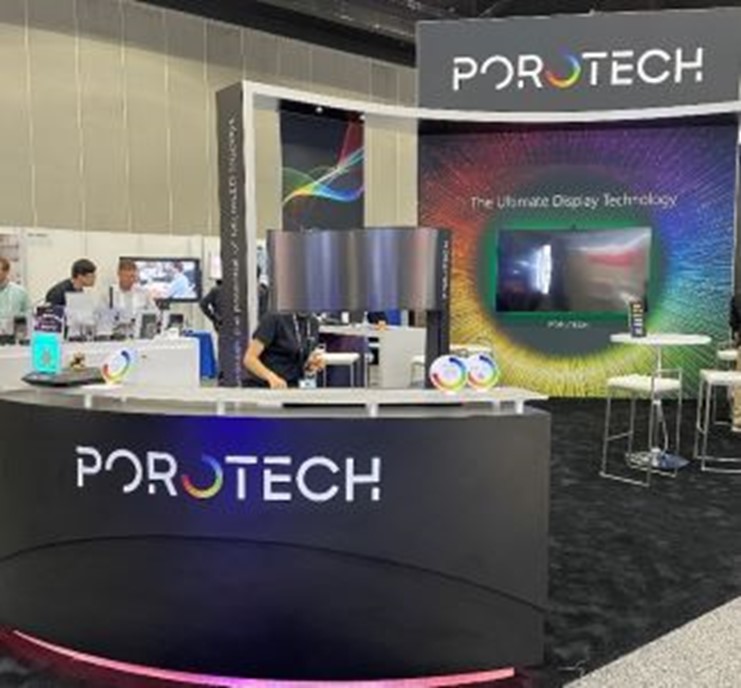
Micro LED developer Porotech exhibited what could arguably be the world's first monolithic full-color Micro LED display for AR device applications. The product was created based on the company's proprietary Dynamic Pixel Tuning™ (DPT) technology. It features a 0.26-inch size, a resolution of 1280x720, and is able to rapidly display red, green and blue light to achieve full-color RGB display with rich, saturated colors.
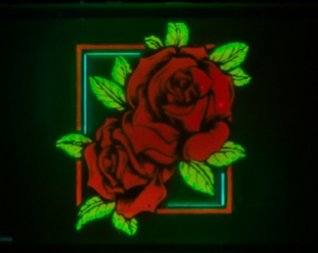
Monolithic full-color Micro LED display (Credit: Porotech)
MICLEDI

Credit: MICLEDI
At the exhibition, MICLEDI presented a combination of RGB Micro LED products.
-
Blue and green Micro LED arrays with AM, PM, microlens-free models, all of which feature a pixel density of 9150 PPI.
-
GaN- and AlInGaP-based red Micro LED arrays.
-
A Micro LED wafer measuring 300mm.
-
A Projection system driven by a blue Micro LED display capable of driving 480x320 visible images.
Sundiode
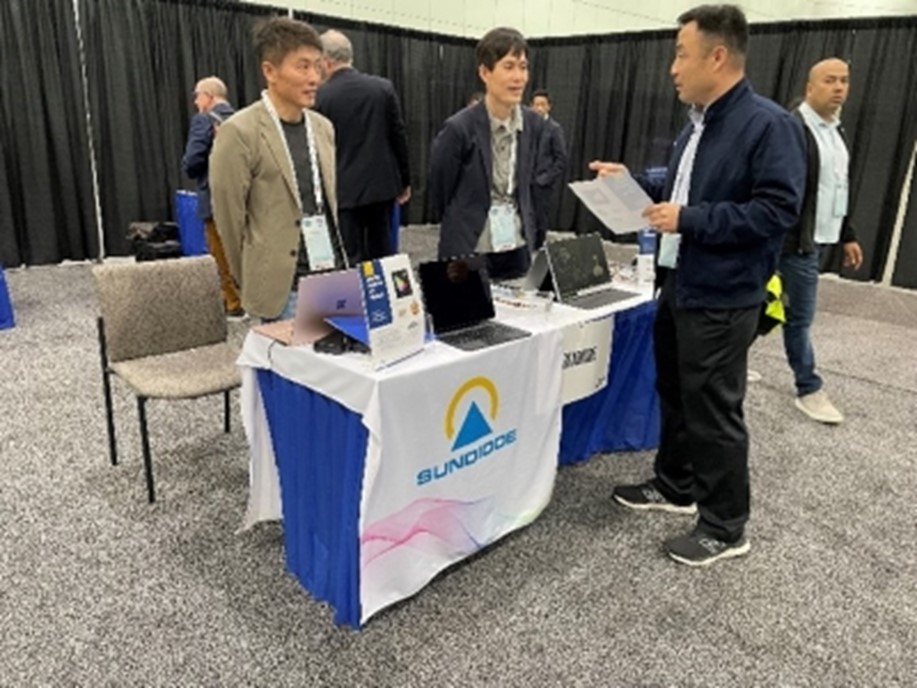
Sundiode, a developer of Micro LED displays, demonstrated a full-color Micro LED microdisplay composed of stacked RGB pixel arrays using the silicon-based AM CMOS backplane driving technology. Each Micro LED chip measures 100μm, with the display size being 15.4mm × 8.6mm and resolution being 200 PPI.
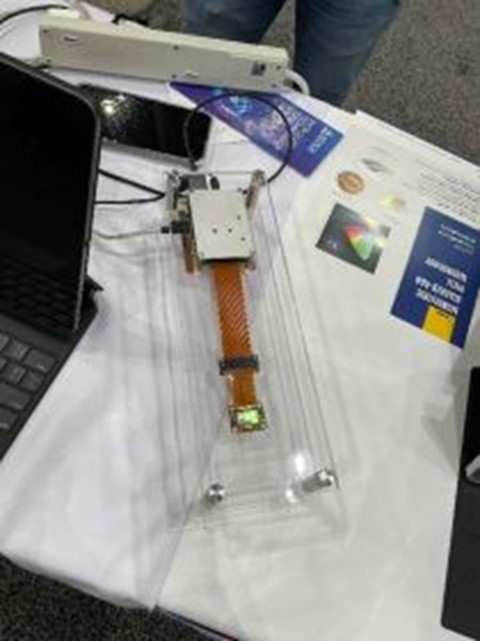
Fraunhofer FEP
The Fraunhofer Institute for Organic Electronics, Electron Beam and Plasma Technology FEP (Fraunhofer FEP), based in Germany, exhibited various microdisplays including:
-
The latest OLED microdisplay with allegedly the smallest pixel size (2.5μm) in the world
-
A test board equipped with an extremely energy-efficient OLED microdisplay.
-
A 720p OLED microdisplay for AR applications
-
An OLED microdisplay with ultra-low power consumption for wearable devices.
-
A multi-color display with ultra-low power consumption for thermal imaging applications.

OLED microdisplay with a pixel size of 2.5μm and resolution of 1440*1080
Sitan Technology
At the exhibition, Sitan Technology showcased what it claimed to be the world's first full HD Micro LED-powered microdisplay with a resolution of 1920x1080. The product is compatible with AR/VR/XR applications, smart wearables and automotive AR HUDs.
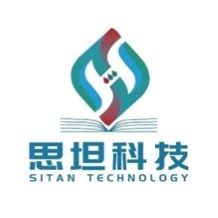
The new Micro LED microdisplay module features a diagonal length of only 0.45 inches and a resolution of 1920x1080, with combined high image quality, million-grade brightness (nits) and low power consumption. In addition to wearable applications, the product will highly likely enter the micro-projector market and replace existing high-end solutions in the future.
Conclusion
With the continuous development of AR/VR devices by leading consumer electronics giant Apple and its plans to incorporate Micro LED into future Apple Watches, the attention on microdisplay applications has once again increased. Display manufacturers are all accelerating their research and development efforts and marketing campaigns in related technologies, hoping to seize new opportunities in the emerging market.
At the SID 2023 exhibition, both display component manufacturers and end panel makers presented a wide range of microdisplay products, all featuring cutting-edge technologies such as Mini/Micro LED and Micro OLED, allowing the visitors to witness the charm of novel display technologies in the micro-sized display sector.
In the field of microdisplays, Mini LED is mostly applied in the form of backlights in VR devices, while Micro OLED has become the mainstream display technology in current AR glasses. Moreover, recent news reports have indicated that Apple's first XR product will come with the more mature Micro OLED technology.
Micro LED boasts features such as ultra-high luminous efficiency and low power consumption that are unparalleled by other display technologies. As a result, it finds wide applications in the microdisplay sector, including smartwatches, AR/VR devices, and even smartphones. Although Micro LED is still in its early stages of development, the display technology is growing fast, with frequent breakthroughs in the industry's latest technological achievements, indicating promising future development and applications.
Consulting firm TrendForce has expressed optimism about the application of Micro LED in head-mounted AR smart glasses, wearable smartwatches, and smart driving cabins and transparent display products for vehicles, all of which will give rise to high-end Micro LED applications. The market value of Micro LED displays in various applications is estimated to reach $542 million. Following the maturity of the technology by 2025, there will be explosive growth in its market value.
(By Irving from LEDinside)
TrendForce 2023 Micro LED Market Trend and Technology Cost Analysis
Release Date: 31 May / 30 November 2023
Language: Traditional Chinese / English
Format: PDF
Page: 160 / Year
TrendForce 2022 Mini LED New Backlight Display Trend Analysis
Publication Dates: April 30 and October 31, 2022
Language: Traditional Chinese/English
Format: PDF
Number of Pages: The two publications will total 120–130 pages
If you would like to know more details , please contact:
 in the world A test board equipped with an extremely energy-efficient OLED microdisplay. A 720p OLED microdisplay for AR applications An OLED microdisplay with ultra-low power consumption for wearable devices. A multi-color display with ultra-low power consumption for thermal imaging applications.)





 CN
TW
EN
CN
TW
EN










































